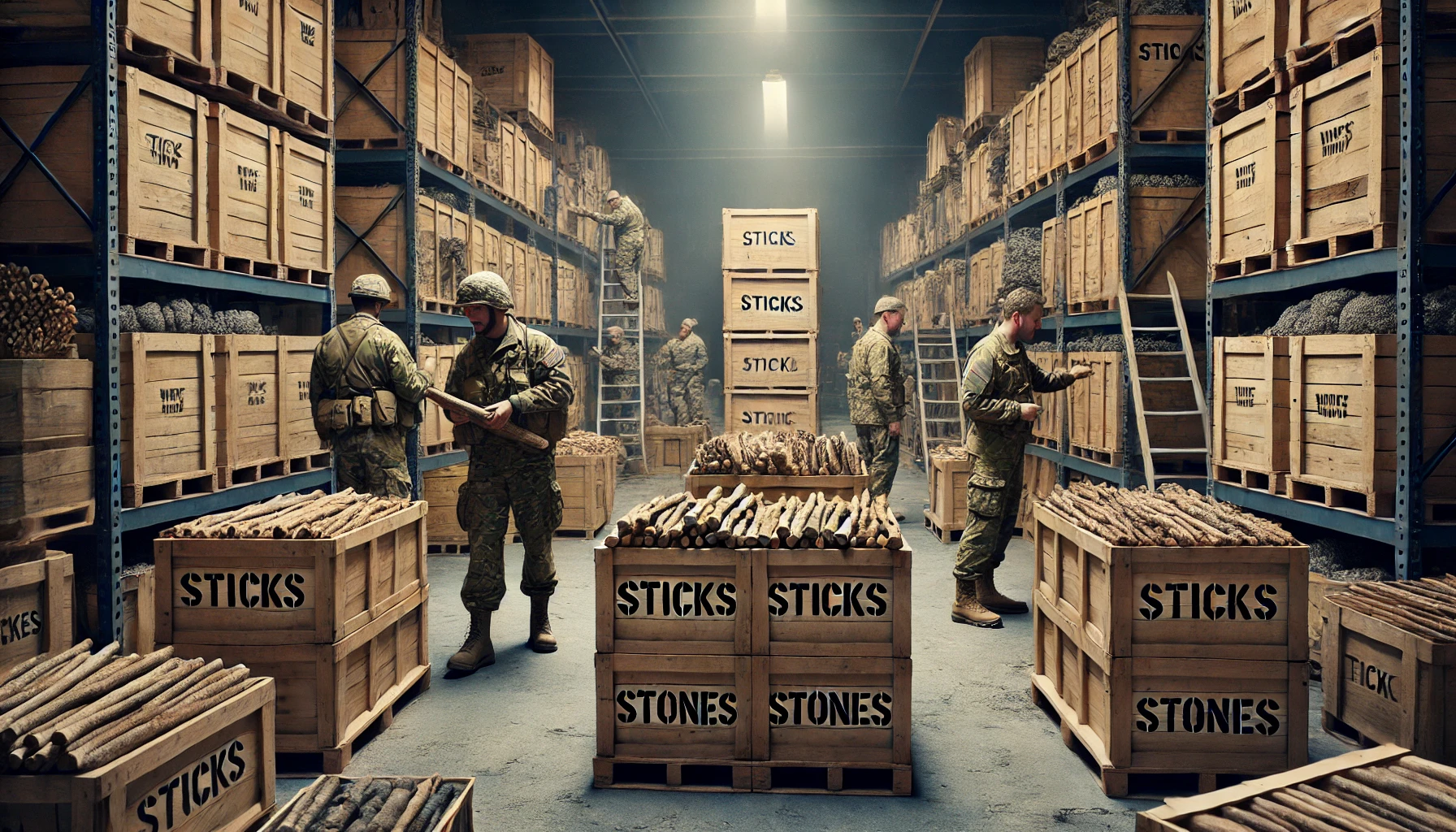In an unprecedented move that has left military analysts scratching their heads, the United States Army has announced it is amassing a significant stockpile of sticks and stones in anticipation of World War 4. This decision marks a radical departure from conventional warfare strategies, harking back to the most primal forms of combat known to humanity.
The Pentagon released a statement early Monday morning detailing the strategic shift: “In an ever-evolving battlefield landscape, it is imperative that our armed forces adapt to potential future conflicts with both innovation and historical wisdom. As such, the U.S. Army will be augmenting its arsenal with proven deterrents of aggression: sticks and stones.”
Sources inside the military logistics corps have revealed that units specializing in “Paleolithic Warfare Techniques” are being formed, with soldiers undergoing intensive training in stick-throwing accuracy, stone slinging, and tactical name-calling. The Army has also reportedly commissioned the development of advanced slingshot technology, capable of launching stones with unprecedented precision and lethality.
Critics of the plan have been vocal, with many questioning the efficacy of such rudimentary weapons in a modern warfare scenario. However, supporters argue that the psychological impact of facing an adversary armed with the very tools that predate civilization cannot be underestimated.
General I.M. Stonefaced, the newly appointed head of the Stone and Stick Strategic Initiative (SASSI), defended the strategy in a press conference: “Our enemies will not expect this. History has shown that sticks and stones not only break bones but can also break the spirit of even the most technologically advanced foes. Plus, our supply lines for these materials are virtually inexhaustible.”
The logistics of amassing such unconventional armaments have already spurred economic activity in rural areas, with the Army contracting local woodsmen and quarries to supply the raw materials necessary for the buildup. “It’s a win-win situation,” claimed a local businessman, “We’re supporting our troops and revitalizing the stick and stone industries.”
In preparation for the deployment of these new-old weapons, the Army has begun retrofitting several bases to accommodate the storage of sticks and stones, with special warehouses labeled “Future Warfare Supplies” being erected across the country. These facilities are said to be as secure as nuclear arsenals, ensuring the nation’s strategic stick reserves remain uncompromised.
As the world watches this bold strategy unfold, questions about the nature of future conflicts and the role of innovation in warfare are brought to the forefront. Whether this plan will catapult the United States to the forefront of global military strategy or whether it will be remembered as a misguided attempt at ingenuity remains to be seen.
In the meantime, the U.S. Army marches on, sticks in hand and stones at the ready, prepared to face whatever the future may hold with the oldest tools known to man.

